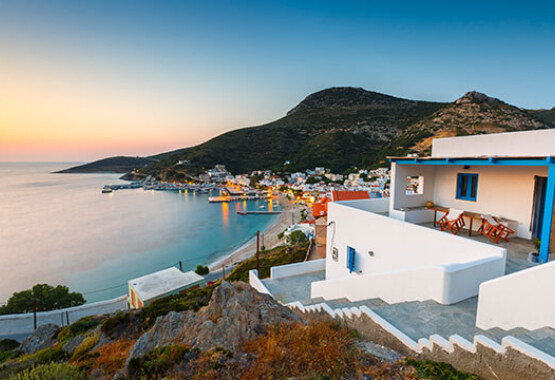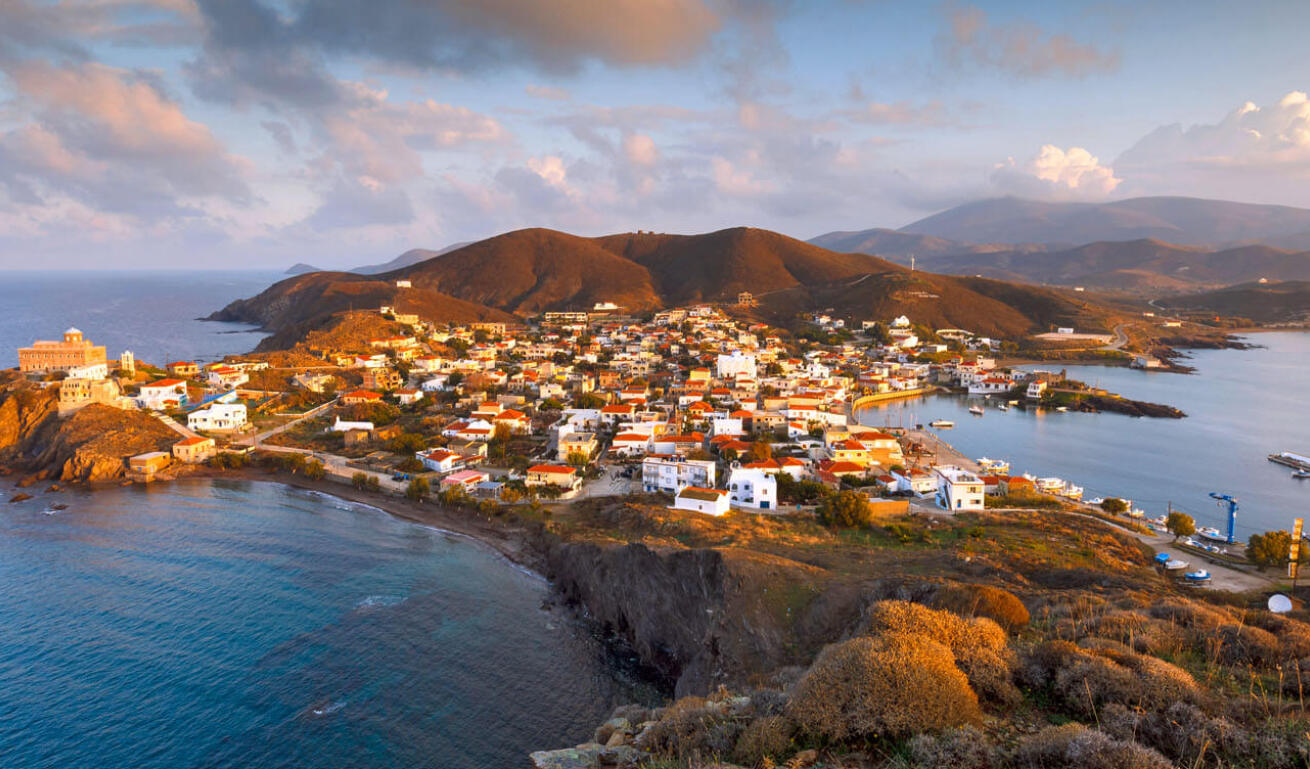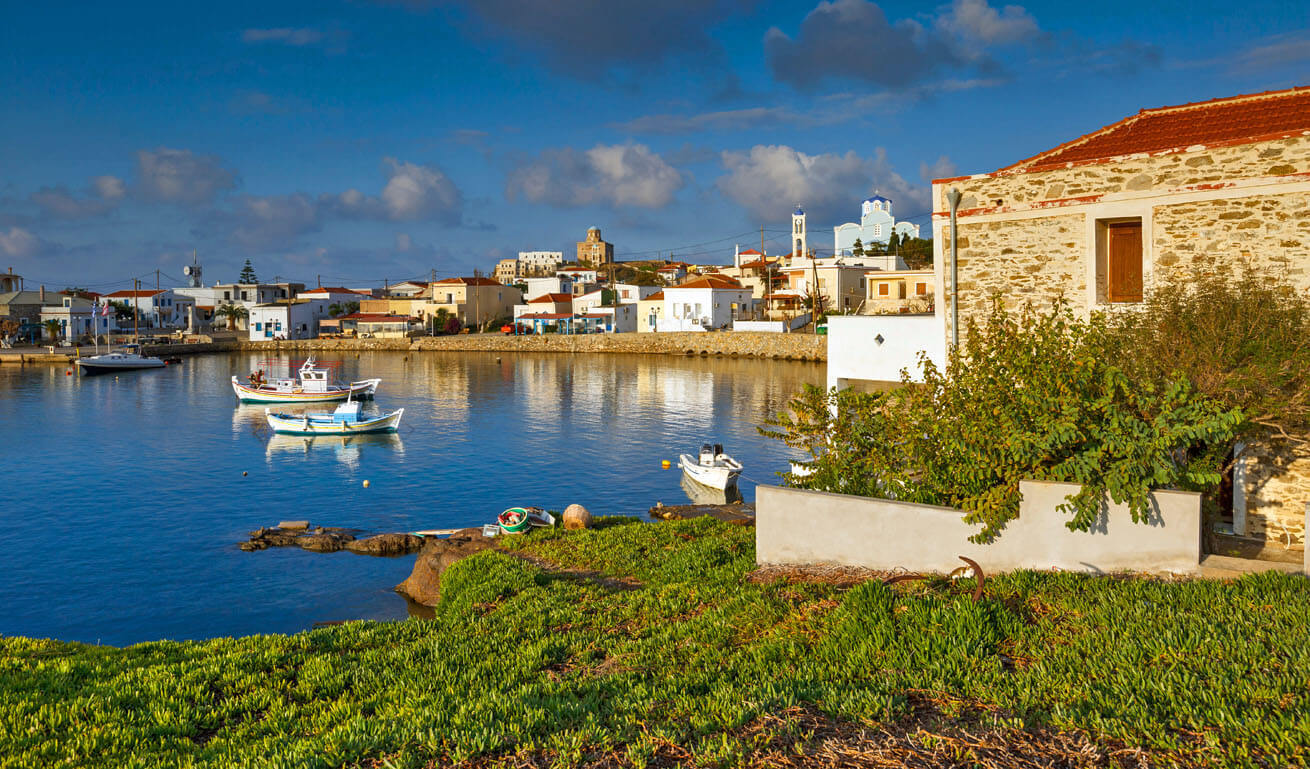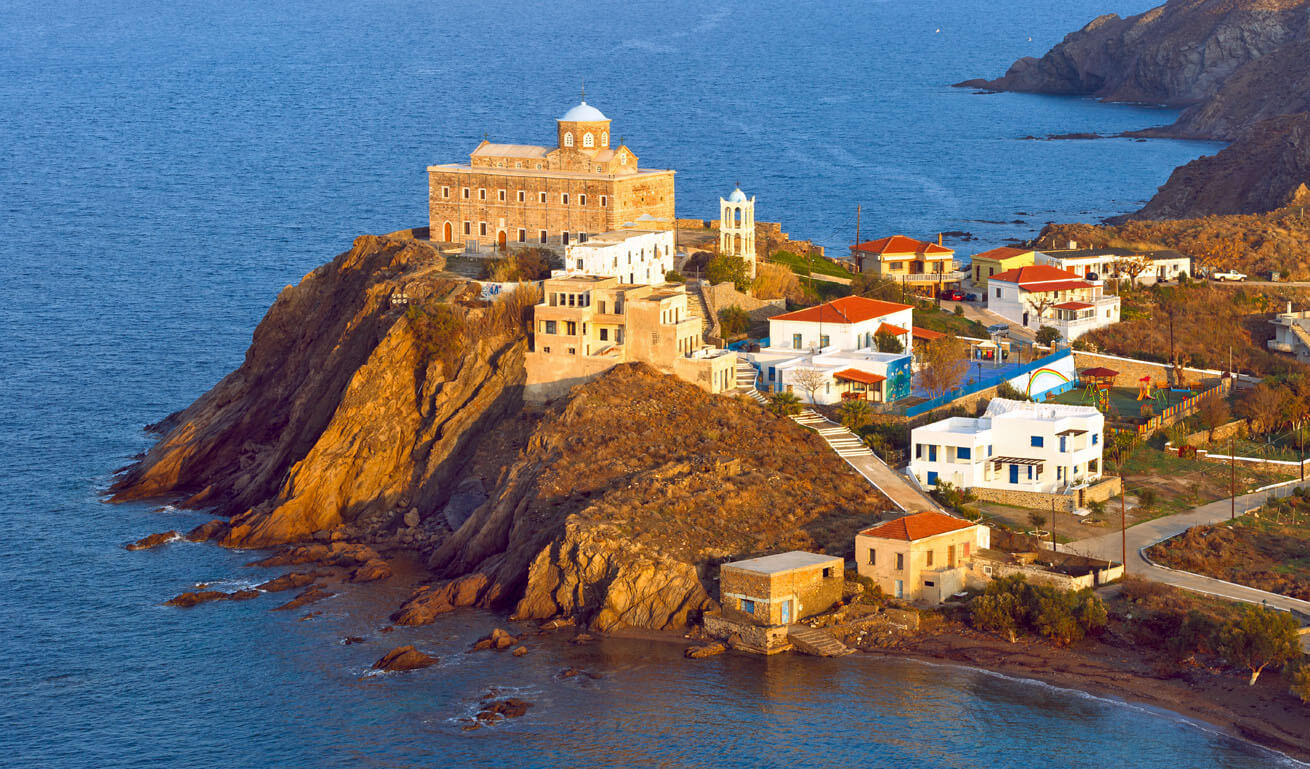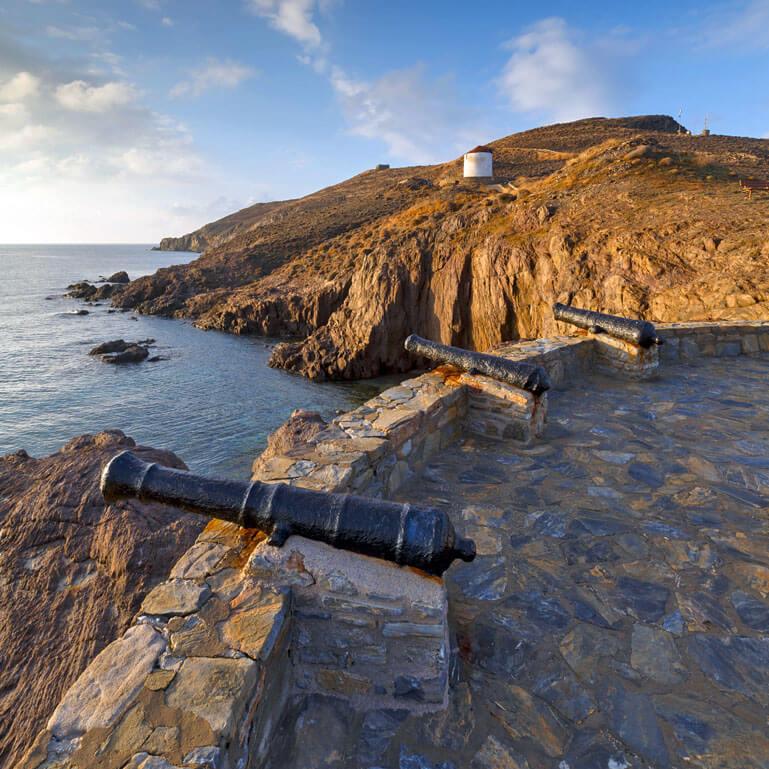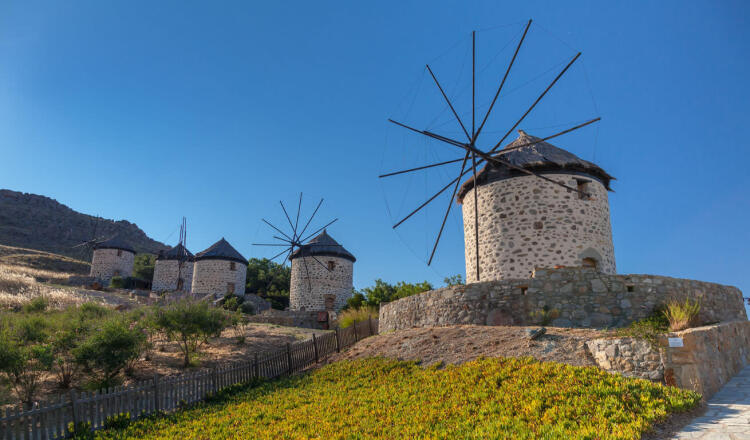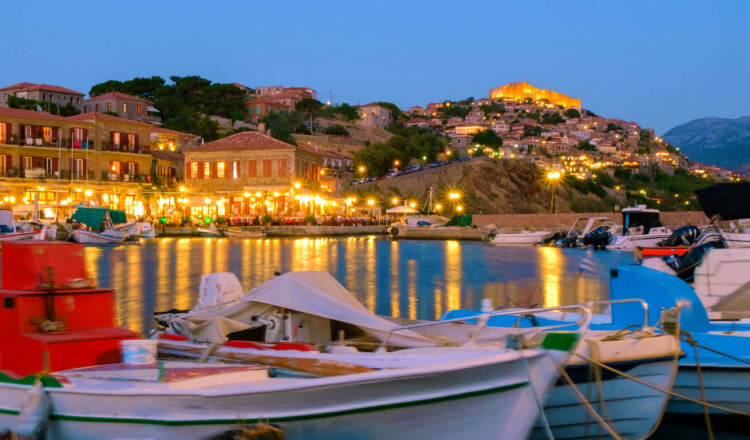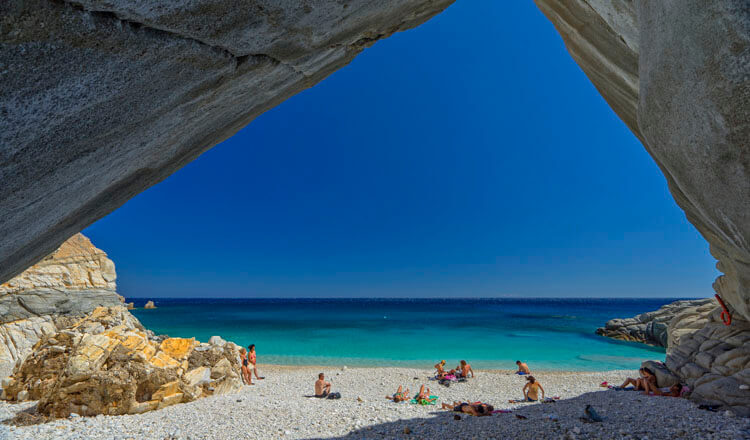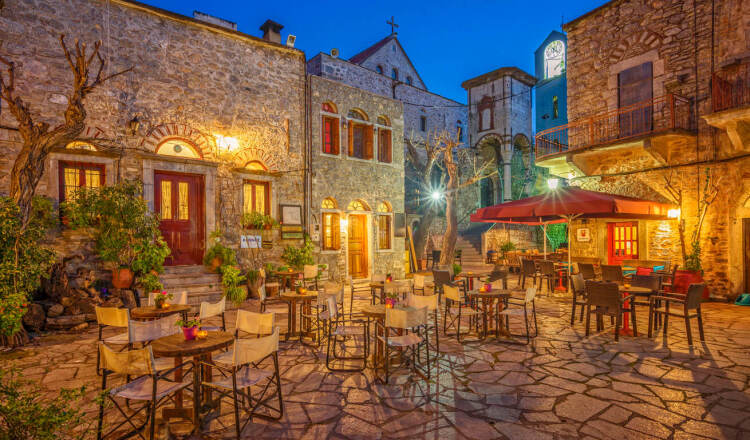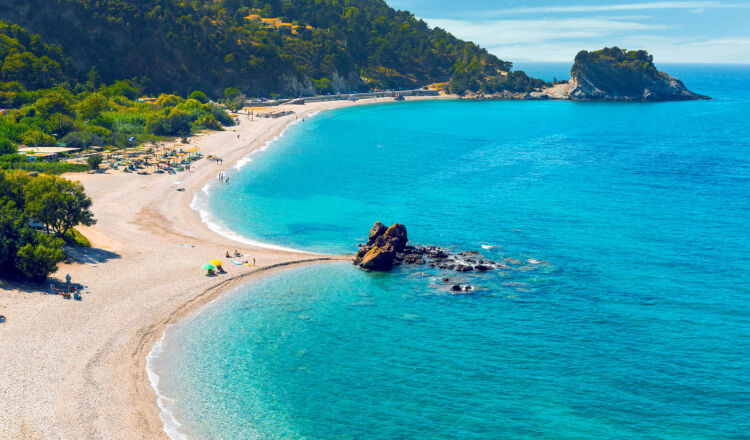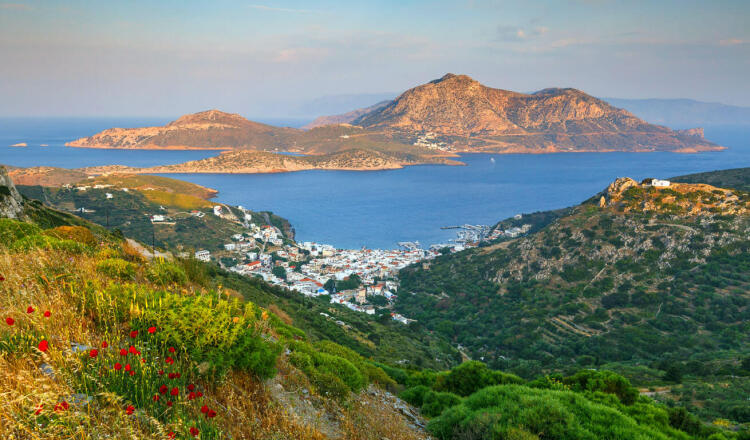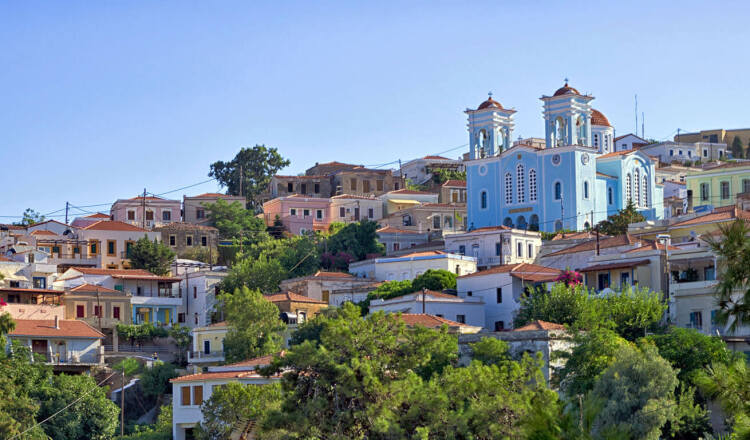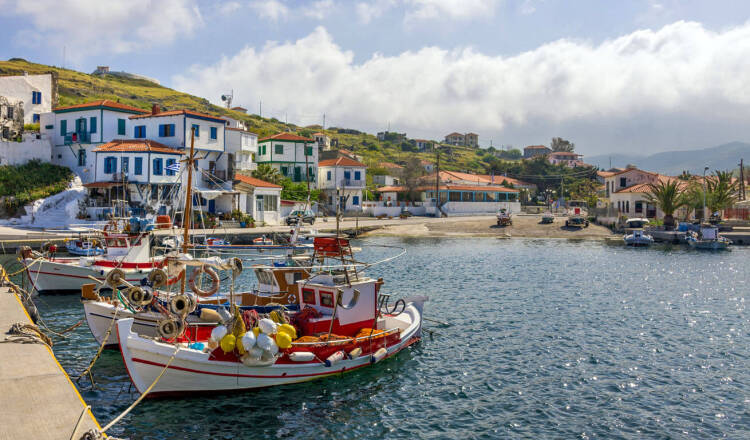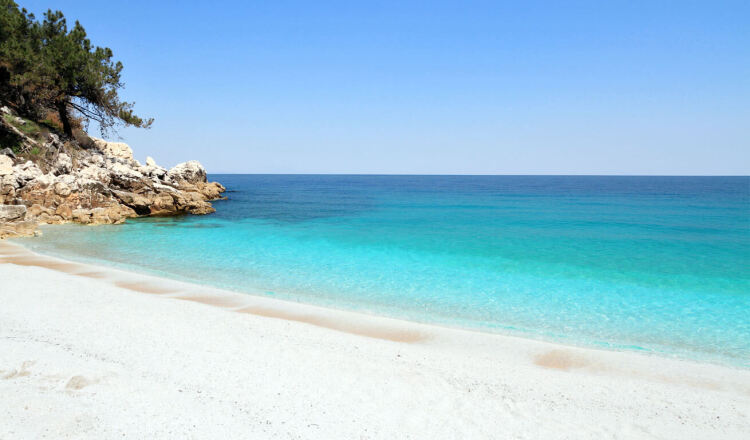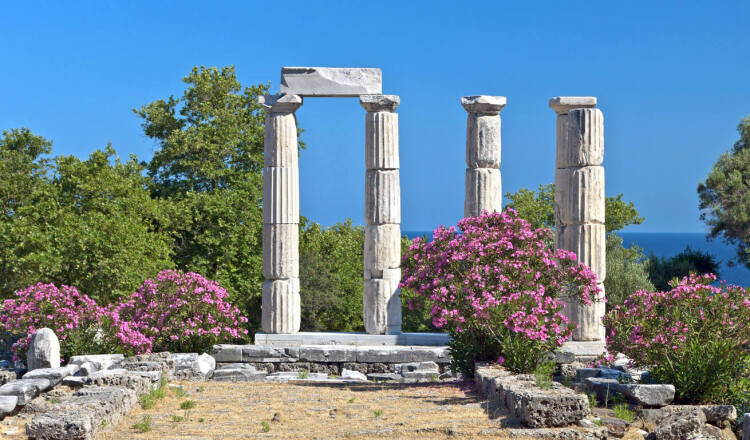Continuously inhabited since the Mycenaean era, as shown by the significant archaeological finds from the cemetery excavated in Archontiki Gulf, Psara provides travellers with a precise dose of serenity and splendour – and that’s not all. The residents’ helpful disposition is legendary, while the island’s beaches are never too crowded, whether one visits the popular beaches of Katsounis and Kato Gialos, with its local beach volley tournament, or Lazaretta, with its fine sand and seashells, Lakka or Lemnos beach.
Fans of underwater fishing will discover a true submarine treasure in the countless skerries that surround the island. Hikers will appreciate the simple beauty of the Church of Agios Nikolaos, with its sixty steps, built in 1793, and the Monastery of the Dormition of Virgin Mary, with its rare manuscripts and religious books preserved, books printed in Moscow and Venice. During the historic destruction of Psara, the only thing to survive was the icon of Virgin Mary crafted by El Greco, which was smuggled out to the island of Syros, where it remains to this day.
Psara
It is the only village on the island, with 400 residents. It has low ceilinged houses of mixed architecture developed around the port. The must see attractions of Psara are Palaiokastro (old castle), built in fear of pirates by settlers (people from Thessalia, Evia and Chios) in the 15th century. Here, a lighthouse guards the busy channel between Chios and Psara.
Pay a visit to the area where the house of C. Kanaris, used to be. Kanaris was a hero of the Greek War of Independence and then Prime-minister of Greece. Visit also the hill of Mavri Rachi, with a Monument to the Slaughter. Every year, on the last Sunday of June there is the Commemoration of Psara Holocaust, an occasion for celebration and cultural events.
Last but not least, when in Psara take the traditional fish boat and visit the neighbouring island of Antipsara to swim at its beautiful sandy beaches.
At Psara, one can sample the tastiest seafood ever, as well as the most affordable lobster pasta in Greece. You can sample local cheese produce by trying mizithra cheese and kopanisti dip and find yourself in agreement with connoisseurs who support that the thyme honey of Psara, which is only harvested once a year, is at the pinnacle of honey production in the entire Mediterranean.
